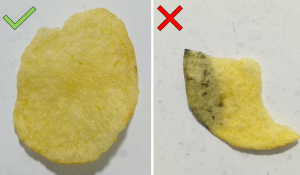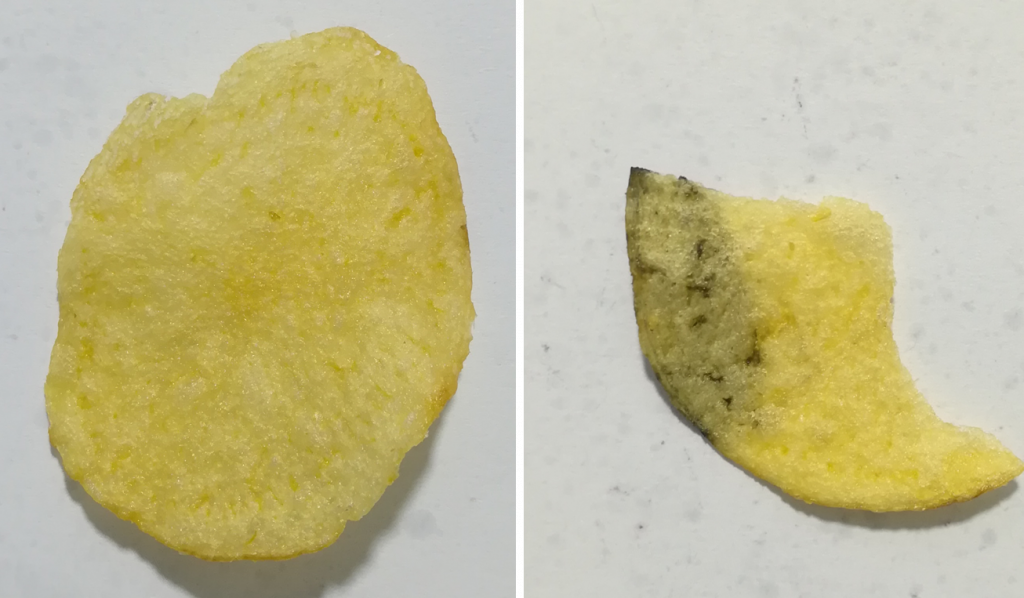The task
In industrial food production, potato chips, snacks and baked goods must be continuously checked for color deviations, structural defects and foreign bodies. Even the smallest differences in browning, texture or shape can determine product quality. The aim is to evaluate each product automatically during production – without manual intervention and without reducing production speed.
The challenge
Potato potato chips are a natural product whose shape, color and thickness vary from batch to batch. Conventional image processing methods quickly reach their limits here, as they are dependent on fixed rules. Differences in lighting, oil content or browning can easily lead to misclassifications. An AI must learn to distinguish reliably between tolerable variations and genuine quality defects, such as burnt areas, dark discolorations or structural defects.
The solution
Our specially optimized embedded AI recognizes in real time whether a chip corresponds to the desired quality.
It analyses the color, structure and edge shape of each chip and classifies it as “good” or “faulty”.
The model runs directly on a system-on-chip (SoC) with FPGA architecture – without a cloud connection and without external computing resources.
Thanks to the compact architecture, up to 1,250 images per second can be processed – ideal for high-speed production lines in the food industry.
Thanks to synthetic training data, the model can be quickly adapted to new varieties, textures or products.
Key technical data
| Parameter |
Value |
| Model size |
approx. 10 kB |
| Complexity |
approx. 200 kOPs |
| Platform |
SoC (FPGA)
|
| Frames per second |
1,250 FPS
|
| Test accuracy |
99,5 %
|

The added value
The AI reliably detects quality deviations in real time and prevents faulty chips from entering the packaging process. Thanks to its high speed and extremely small model size, the solution can be integrated directly into existing systems – without additional hardware and without interrupting the line.
This creates a system that continuously learns, adapts to changing conditions and sustainably improves quality control. The result: consistent product quality, reduced reject rates and efficient, traceable inspection – without the need for a cloud.

